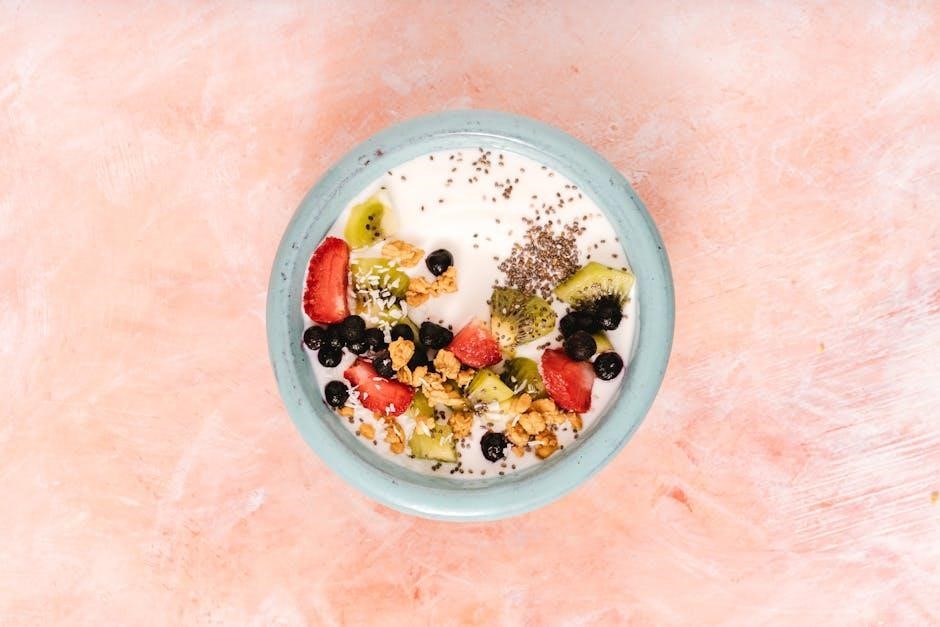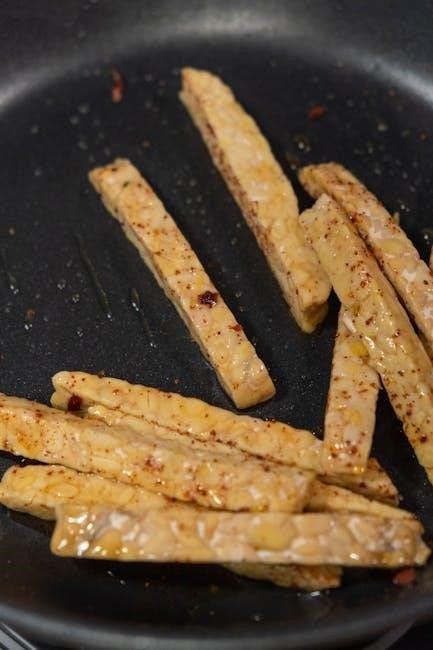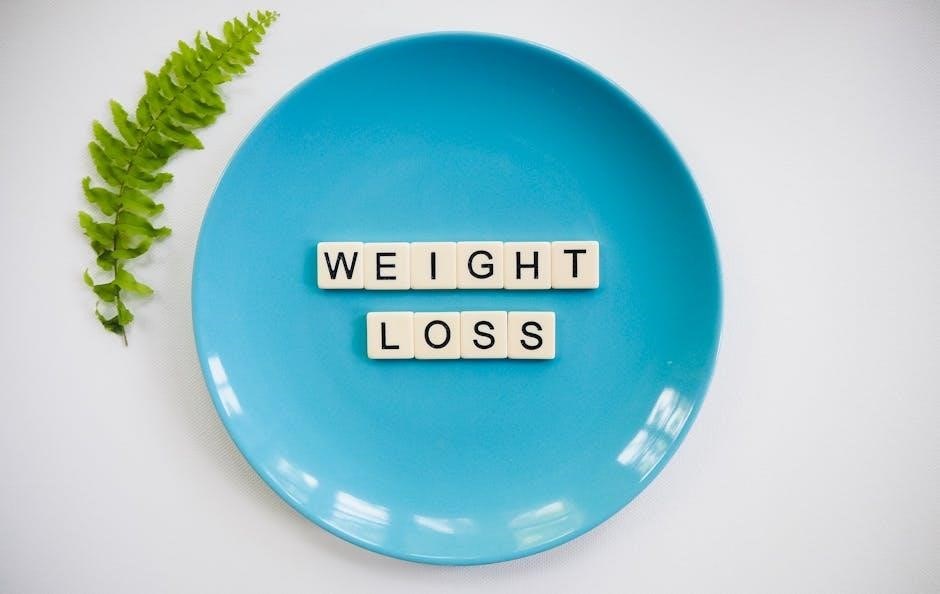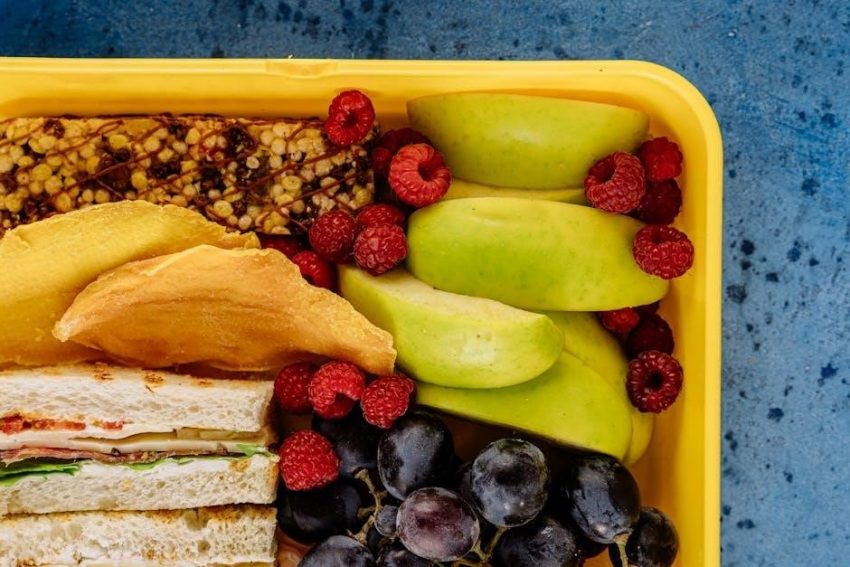Fatty liver disease, or NAFLD, occurs when excess fat accumulates in the liver, often due to poor diet, obesity, or diabetes. It can progress to severe conditions like NASH or cirrhosis if untreated.
Understanding Fatty Liver Disease (NAFLD)
Non-alcoholic fatty liver disease (NAFLD) occurs when excess fat builds up in the liver of individuals who consume little or no alcohol. It is closely linked to obesity, diabetes, and metabolic syndrome. NAFLD can progress to non-alcoholic steatohepatitis (NASH), cirrhosis, or even liver failure if left untreated. A healthy diet is critical in managing NAFLD, as it helps reduce liver inflammation, improve insulin sensitivity, and promote fat metabolism. A structured fatty liver diet plan, often available as a downloadable PDF, provides guidance on nutrient-rich foods, portion control, and lifestyle changes to support liver health and overall well-being.
The Importance of Diet in Managing Fatty Liver
Diet plays a crucial role in managing fatty liver disease by reducing liver inflammation and promoting fat metabolism. A well-structured fatty liver diet plan helps improve insulin sensitivity and aids in weight management, which are essential for reversing NAFLD. By focusing on nutrient-dense foods, such as whole grains, lean proteins, and healthy fats, individuals can support liver function and overall health. Avoiding sugary drinks, saturated fats, and processed foods is equally important to prevent further liver damage. A downloadable PDF guide can provide a comprehensive roadmap, ensuring sustainable dietary changes that benefit both liver health and general well-being.
How to Use a Fatty Liver Diet Plan PDF
A fatty liver diet plan PDF serves as a comprehensive guide to managing NAFLD through dietary changes. It typically includes detailed meal plans, grocery lists, and recipes tailored to reduce liver inflammation and promote fat metabolism. Users can follow the structured plan step-by-step, ensuring consistency and ease of implementation. The PDF often provides daily meal schedules, portion controls, and nutritional advice, making it accessible for individuals to adopt healthier eating habits. By downloading and referencing the PDF regularly, individuals can track their progress and make necessary adjustments to achieve long-term liver health and overall well-being.

Key Foods to Eat for Fatty Liver Health
Incorporate foods rich in fiber, monounsaturated fats, omega-3s, and antioxidants to reduce inflammation and improve liver function. Whole grains, lean proteins, and healthy fats are essential for a fatty liver diet plan PDF.
Foods High in Fiber
Fiber-rich foods are essential for managing fatty liver disease as they help regulate blood sugar and reduce inflammation. Include whole grains like oats, quinoa, and barley, as well as vegetables such as broccoli, spinach, and Brussels sprouts. Fruits like apples, berries, and pears are also excellent sources of fiber. Legumes, including lentils and chickpeas, provide both fiber and protein. Aiming for 25-30 grams of fiber daily can support liver health and promote a balanced diet. Incorporating these foods into your fatty liver diet plan PDF will help improve digestion and overall well-being.

Monounsaturated Fatty Acids
Monounsaturated fatty acids (MUFAs) are beneficial for fatty liver management as they reduce liver fat and inflammation. Avocados, almonds, olive oil, and flaxseeds are rich in MUFAs. These fats improve cholesterol levels, enhance insulin sensitivity, and support weight management, all of which are crucial for liver health. Incorporating MUFAs into your diet can help mitigate fatty liver disease progression while providing essential nutrients. They are a healthier alternative to saturated fats and should be included in moderation as part of a balanced fatty liver diet plan PDF.
Omega-3 Rich Foods
Omega-3 fatty acids are essential for reducing liver inflammation and fat accumulation, making them a key component of a fatty liver diet plan PDF. Fatty fish like salmon, mackerel, and sardines are excellent sources. Plant-based options include flaxseeds, chia seeds, and walnuts. These foods help lower triglycerides, improve insulin sensitivity, and promote a healthier liver. Incorporating omega-3 rich foods into meals can significantly support liver health and overall well-being, especially when combined with other dietary recommendations for managing fatty liver disease.
Antioxidant-Rich Foods
Antioxidant-rich foods play a crucial role in combating oxidative stress and inflammation, which are central to fatty liver disease progression. Berries, leafy greens, and nuts are excellent sources of antioxidants like vitamin E and polyphenols. These nutrients help protect liver cells from damage and promote healing. Incorporating foods such as spinach, blueberries, and almonds into your diet can enhance liver function and reduce inflammation. Antioxidants also support overall health, making them a vital component of a fatty liver diet plan PDF. By including these foods, individuals can better manage liver health and complement other dietary strategies for fatty liver management.
Whole Grains
Whole grains are essential in a fatty liver diet plan PDF due to their high fiber and nutrient content, which aids in insulin sensitivity and weight management. Oats, quinoa, and brown rice are excellent choices, providing sustained energy and reducing cravings for refined carbohydrates. Whole grains also help lower cholesterol and control blood sugar levels, which are beneficial for individuals with fatty liver disease. Incorporating whole grains into meals supports a balanced diet and promotes liver health by reducing inflammation and fat accumulation. They are a key component of a sustainable and effective fatty liver management plan.
Lean Proteins
Lean proteins are crucial in a fatty liver diet plan PDF as they help reduce liver fat and improve insulin sensitivity. Opt for options like fish, chicken, tofu, and legumes, which are low in saturated fats and rich in essential amino acids. These proteins support muscle repair and metabolism without overburdening the liver. Avoid processed meats and opt for grilled, baked, or steamed preparations. Portion control is key to maintaining a balanced intake. Incorporating lean proteins into meals helps stabilize blood sugar levels and promotes overall liver health, making them a vital component of a fatty liver management plan.

Foods to Avoid for Fatty Liver
To manage fatty liver, avoid sugary drinks, saturated fats, refined carbs, processed foods, and alcohol. These contribute to fat accumulation and inflammation, worsening liver health and weight management.
Sugary Drinks and Foods
Sugary drinks and foods, such as soda, candy, and concentrated juices, are high in empty calories and can lead to insulin resistance and fat accumulation in the liver. These items contribute to inflammation and worsening of fatty liver disease. Limiting or avoiding them is crucial for improving liver health. Opt for natural sources of sweetness, like fruits, and choose water or herbal teas instead of sugary beverages. Reducing sugar intake helps lower liver fat and supports overall well-being. Incorporating this change into your diet plan can significantly impact fatty liver management and prevention of progression to more severe conditions.
Saturated and Trans Fats
Saturated and trans fats are harmful to liver health, as they promote fat accumulation and inflammation. Foods like red meat, processed snacks, and fried foods are high in these fats. Reducing their intake is essential for managing fatty liver disease. Opt for healthier alternatives, such as lean proteins, plant-based oils, and whole foods. Avoiding these fats helps reduce liver inflammation and supports overall well-being. Incorporating this change into your diet plan can significantly improve fatty liver management and prevent disease progression. Always check food labels to identify and limit these harmful fats for a healthier liver.
Refined Carbohydrates
Refined carbohydrates, such as white bread, pastries, and sugary snacks, can worsen fatty liver disease by causing insulin resistance and promoting fat storage in the liver. These foods are typically low in nutrients and high on the glycemic index, leading to rapid spikes in blood sugar and increased liver inflammation. Reducing or eliminating refined carbs from your diet is crucial for managing fatty liver. Instead, focus on whole, unprocessed sources of carbohydrates like vegetables, whole grains, and legumes, which offer sustained energy and essential nutrients without the harmful effects on liver health. This dietary adjustment supports liver function and overall well-being.
Processed Foods
Processed foods are detrimental to liver health as they are often high in unhealthy fats, added sugars, and sodium. These foods can promote inflammation and fat accumulation in the liver, exacerbating fatty liver disease. Examples include packaged snacks, frozen meals, and sugary beverages. Regular consumption of processed foods can lead to weight gain, insulin resistance, and increased liver damage. To manage fatty liver, it’s essential to limit these foods and opt for whole, nutrient-dense alternatives. Reading food labels and avoiding products with artificial additives and preservatives can help in making healthier choices, supporting liver function and overall well-being effectively.
Alcohol
Alcohol is a significant contributor to fatty liver disease, as it directly damages liver cells and promotes fat accumulation. Even moderate alcohol consumption can worsen liver inflammation and impair its ability to metabolize fats. For individuals with fatty liver disease, especially those with NAFLD, complete abstinence from alcohol is strongly recommended. Studies show that alcohol metabolism generates harmful byproducts that exacerbate liver damage, leading to conditions like alcoholic fatty liver and potentially progressing to cirrhosis. Avoiding alcohol is crucial for preventing further liver damage and supporting recovery, making it a key component of any effective fatty liver diet plan. This helps in reversing early-stage liver damage and improving overall health outcomes significantly.

Sample 7-Day Fatty Liver Diet Plan
A structured 7-day meal plan focusing on nutrient-rich foods to reduce liver inflammation and promote fat metabolism. Includes breakfast, lunch, dinner, and snack options for a balanced approach.
Breakfast Options
Start your day with nutrient-rich breakfasts that support liver health. Options include oatmeal with berries, Greek yogurt with chia seeds, or a smoothie with spinach, almond milk, and flaxseeds. Whole-grain toast with avocado or a vegetable omelet are also excellent choices. Incorporate lean proteins like egg whites or tofu to help regulate blood sugar and provide essential amino acids. Avoid sugary cereals and opt for unsweetened almond milk or green tea. These breakfast options are designed to be low in saturated fats, high in fiber, and rich in antioxidants, helping to reduce liver inflammation and promote a healthy metabolism throughout the day.
Lunch Ideas
For lunch, focus on balanced meals that combine lean proteins, whole grains, and a variety of vegetables. Grilled chicken or fish with a side of quinoa, brown rice, or whole-grain bread is an excellent option. Incorporate steamed or roasted vegetables like spinach, broccoli, or bell peppers for added nutrients. Salads with mixed greens, cucumbers, and carrots, topped with avocado or olive oil dressing, are also ideal. Avoid processed meats and opt for plant-based proteins like lentils or tofu for diversity. Pair your meal with a small serving of healthy fats, such as nuts or seeds, to support liver function. Keep sugary drinks to a minimum and choose water or herbal tea instead.
Dinner Recipes
Dinner should focus on balanced, nutrient-rich meals to support liver health. Grilled chicken or fish with herbs like garlic and rosemary is an excellent option, paired with steamed vegetables like asparagus or Brussels sprouts. Baked sweet potatoes or quinoa can serve as a complex carbohydrate source. Include a variety of colorful vegetables, such as bell peppers, zucchini, and carrots, for antioxidants and fiber. Plant-based options like lentil or vegetable stir-fries with olive oil are also beneficial. Avoid heavy sauces and opt for light seasoning with lemon juice or balsamic vinegar. A small side salad with mixed greens and a light vinaigrette complements the meal perfectly, ensuring a well-rounded dinner.
Snacks and Beverages
Healthy snacks and beverages are essential for maintaining liver health. Opt for fresh fruits like berries, apples, or citrus, which are rich in antioxidants and fiber. Nuts and seeds, such as almonds, walnuts, chia seeds, and flaxseeds, provide omega-3 fatty acids and healthy fats. Herbal teas, green tea, or lemon water are excellent beverage choices, promoting hydration and detoxification. Avoid sugary drinks like soda or fruit juices high in fructose. Instead, consider a green smoothie with spinach, cucumber, and avocado for a nutrient-packed option. For snacks, roasted chickpeas or veggie sticks with hummus are satisfying and liver-friendly. Limit alcohol and processed snacks to support your fatty liver diet plan.

21-Day Fatty Liver Diet Plan
A structured 21-day plan focusing on liver-friendly foods, portion control, and sustainable habits. Includes weekly meal guides, customization options, and progress tracking for optimal liver health.
Weekly Meal Structure
The 21-Day Fatty Liver Diet Plan provides a detailed weekly meal structure, ensuring balanced nutrition and variety. Each day includes options for breakfast, lunch, dinner, snacks, and beverages. The plan emphasizes whole, nutrient-rich foods like whole grains, lean proteins, and healthy fats, while avoiding processed and high-sugar items. Customizable templates allow users to adapt meals to their preferences and dietary needs. The structure promotes portion control, macronutrient balance, and gradual lifestyle changes. By following this organized approach, individuals can reduce liver inflammation, improve insulin sensitivity, and support overall health. Regular updates and tracking features help maintain consistency and motivation throughout the three-week period.
Customizing the Plan
Customizing the 21-Day Fatty Liver Diet Plan ensures it meets individual needs and preferences. Users can modify meal options based on dietary restrictions, allergies, or lifestyle. For example, vegetarians can replace lean meats with plant-based proteins, while those with gluten intolerance can opt for gluten-free grains. The plan also allows for adjustments in portion sizes to accommodate caloric needs. Healthcare professionals or nutritionists can further tailor the plan by incorporating specific foods or avoiding triggers. This flexibility ensures the diet remains sustainable and effective, promoting long-term adherence and better health outcomes for individuals with fatty liver disease.
Progress Tracking
Tracking progress is essential for the success of the fatty liver diet plan. Regularly monitoring weight, liver function, and overall health markers helps assess improvements. Use the provided PDF templates to record daily food intake, physical activity, and any symptoms. This documentation aids in identifying patterns and making necessary adjustments; Additionally, periodic blood tests can measure liver enzyme levels and fat reduction. Sharing progress with a healthcare provider ensures personalized guidance and motivation. Telehealth support, as mentioned earlier, further enhances accountability and helps maintain consistency. Consistent tracking fosters accountability and motivates individuals to adhere to their diet plan, promoting long-term liver health and well-being.

30-Day Fatty Liver Meal Plan
A 30-day fatty liver meal plan offers structured breakfast, lunch, and dinner options, with downloadable PDF templates for meal planners and shopping lists, promoting long-term liver health.
Breakfast, Lunch, and Dinner Options
A 30-day fatty liver meal plan provides diverse, nutrient-rich options for each meal. Breakfast ideas include high-fiber choices like oatmeal with fruits, scrambled eggs with spinach, or Greek yogurt with chia seeds. Lunch options focus on whole grains, lean proteins, and vegetables, such as grilled chicken salads, quinoa bowls, or lentil soups. Dinners feature balanced meals like baked salmon with steamed vegetables, turkey stir-fries, or vegetable-packed stews. Snacks and beverages are also included, emphasizing healthy fats, fruits, and herbal teas. The plan avoids sugary drinks, refined carbs, and processed foods, promoting portion control and mindful eating to support liver health and reduce inflammation. A downloadable PDF template simplifies meal planning and grocery shopping, ensuring consistency and ease. By following these structured options, individuals can adopt sustainable dietary habits that aid in liver recovery and overall well-being.
Meal Planner and Shopping List Templates
A 30-day fatty liver meal plan includes downloadable PDF templates for meal planning and shopping lists, helping individuals organize their dietary routine. These templates provide structured sections for breakfast, lunch, dinner, and snacks, ensuring balanced nutrition. Fillable fields allow users to customize meals based on preferences and dietary needs. Shopping lists are categorized by food groups, making grocery shopping efficient. The templates emphasize whole grains, lean proteins, healthy fats, and antioxidant-rich foods, while avoiding harmful ingredients. They also include space for tracking progress and notes for adjustments. This tool supports long-term sustainability by promoting healthy eating habits and reducing decision fatigue, making it easier to adhere to the fatty liver diet plan.
Long-Term Sustainability
For lasting liver health, adopt a sustainable fatty liver diet focusing on whole, nutrient-dense foods. Incorporate variety to prevent boredom and ensure balanced nutrition. Regular physical activity complements dietary changes, promoting fat loss and liver function improvement. Meal planning and grocery lists help maintain consistency, while gradual adjustments allow the diet to become a lifestyle. Avoid restrictive eating and focus on mindful consumption, fostering a healthier relationship with food. Long-term adherence reduces liver inflammation and prevents disease progression. By making sustainable, enjoyable changes, individuals can improve their overall health and liver function effectively over time, minimizing the risk of complications associated with fatty liver disease.

Lifestyle Changes to Support Liver Health
Incorporate regular physical activity, maintain a healthy weight, and manage stress to support liver health. Ensure adequate sleep and avoid harmful habits like excessive alcohol consumption for optimal well-being.
Regular Physical Activity
Engaging in regular physical activity is crucial for managing fatty liver disease. Exercise helps reduce liver fat, improve insulin sensitivity, and promote weight loss. Aim for at least 150 minutes of moderate-intensity aerobic exercises, such as brisk walking or cycling, per week. Additionally, incorporating strength training sessions can enhance muscle mass, further aiding in fat metabolism. Even light activities like yoga or swimming can contribute to overall health. Consistency is key, as regular movement helps maintain liver health and prevents disease progression. Combining physical activity with a balanced fatty liver diet plan maximizes benefits and supports long-term wellness.
Weight Management
Maintaining a healthy weight is essential for managing fatty liver disease. Excess body fat, particularly around the abdomen, contributes to liver fat accumulation. A combination of a balanced diet and regular physical activity helps achieve and sustain weight loss. Even a modest reduction of 5-10% of body weight can significantly improve liver health. Portion control, avoiding high-calorie foods, and monitoring progress are key strategies. A structured fatty liver diet plan, along with lifestyle changes, supports effective weight management and reduces the risk of disease progression. Healthy weight maintenance not only benefits the liver but also overall well-being.
Stress Reduction Techniques
Chronic stress can exacerbate fatty liver disease by promoting inflammation and fat accumulation. Incorporating stress reduction techniques, such as yoga, meditation, or deep breathing exercises, can help mitigate this impact. These practices lower cortisol levels, which are linked to fat storage and insulin resistance. Regular physical activity, such as walking or swimming, also serves as a natural stress reliever. Additionally, mindfulness and adequate sleep play crucial roles in maintaining emotional balance. By integrating these stress management strategies into daily routines, individuals can support their liver health and overall well-being while adhering to their fatty liver diet plan.
Improving Sleep Quality
Sleep plays a crucial role in overall health, including liver function. Poor sleep quality can disrupt metabolism, leading to increased fat storage and inflammation. Aim for 7-9 hours of sleep nightly to support liver health. Establish a consistent sleep schedule, create a relaxing bedtime routine, and avoid caffeine and electronics before bed. Ensure your sleep environment is dark, quiet, and cool to promote restful sleep. Addressing sleep apnea or other sleep disorders is also essential. Prioritizing sleep helps regulate hormones that control hunger and fullness, supporting weight management and reducing liver fat accumulation. Better sleep habits enhance the effectiveness of your fatty liver diet plan.

Monitoring and Adjusting the Diet Plan
Regularly monitoring progress and adjusting the diet plan ensures the best outcomes for managing fatty liver. Tracking liver function, weight, and overall health helps customize the approach effectively.
Tracking Liver Function
Tracking liver function is essential to monitor the effectiveness of a fatty liver diet plan. Regular blood tests can measure liver enzymes like ALT and AST to assess inflammation reduction. Imaging techniques such as ultrasounds can help visualize fat reduction in the liver. Monitoring these metrics helps healthcare professionals evaluate progress and make necessary dietary adjustments. Consistent tracking ensures the diet plan is working effectively and supports long-term liver health. By combining these methods, individuals can better understand how their dietary changes impact their condition and make informed decisions to sustain improvement.
Adjusting Caloric Intake
Adjusting caloric intake is crucial for managing fatty liver disease. A calorie-controlled diet helps reduce liver fat and improve insulin sensitivity. Aim for a deficit of 500-750 calories daily to promote gradual weight loss, which can reduce liver inflammation. Consulting a healthcare provider ensures the caloric intake aligns with individual needs, preventing excessive restriction. Balanced meals with nutrient-dense foods maintain energy levels while supporting liver health. Regularly reassessing caloric needs helps tailor the diet plan for optimal results and long-term sustainability.
Consulting a Healthcare Professional
Consulting a healthcare professional is essential when managing fatty liver disease through diet. They provide personalized advice based on individual health needs, ensuring the diet plan is safe and effective. Regular check-ups allow monitoring of liver function and adjustments to the plan as needed. A healthcare provider can also address related conditions like diabetes or obesity, offering comprehensive care. Their expertise ensures the diet aligns with overall health goals, preventing potential complications and promoting long-term liver health.

Resources for Fatty Liver Diet Plans
Downloadable PDF guides, such as the 7-Day Fatty Liver Diet Plan, offer structured meal plans and recipes. Websites like Carepatron provide customizable templates and expert resources.
Downloading a Fatty Liver Diet Plan PDF
Downloading a fatty liver diet plan PDF is a convenient way to access structured meal plans and recipes. These guides often include detailed grocery lists, portion control tips, and evidence-based strategies to support liver health. Many PDFs, like the 7-Day or 21-Day Fatty Liver Diet Plan, are designed to be customizable, catering to individual needs and preferences. They typically focus on promoting nutrient-dense foods while avoiding harmful ingredients. By downloading a PDF, users can easily track progress, plan meals, and stay committed to their dietary goals. These resources are widely available online, offering a user-friendly approach to managing fatty liver disease effectively.
Using Templates for Meal Planning
Using templates for meal planning simplifies the process of adhering to a fatty liver diet. These templates provide a structured format for organizing breakfast, lunch, dinner, and snacks. They often include spaces for noting portion sizes, nutritional information, and personal preferences. Templates are especially useful for tracking progress and ensuring meals are balanced and nutrient-rich. Many fatty liver diet plan PDFs come with customizable templates, allowing users to tailor meals to their specific needs. This structured approach helps maintain consistency and makes meal planning less overwhelming, ensuring a sustainable and effective path toward improving liver health and managing fatty liver disease.
Consulting a Nutritionist or Doctor
Consulting a nutritionist or doctor is crucial when creating a fatty liver diet plan. They provide personalized recommendations based on your health status, ensuring the plan is safe and effective. A healthcare professional can help tailor the diet to address specific needs, such as weight loss or managing related conditions like diabetes. They also monitor progress and adjust the plan as needed. Regular check-ins ensure accountability and help sustain long-term adherence. Additionally, a doctor can assess liver function improvements and offer guidance on lifestyle changes; This collaborative approach ensures the diet plan is both effective and sustainable, promoting overall health and liver well-being.
